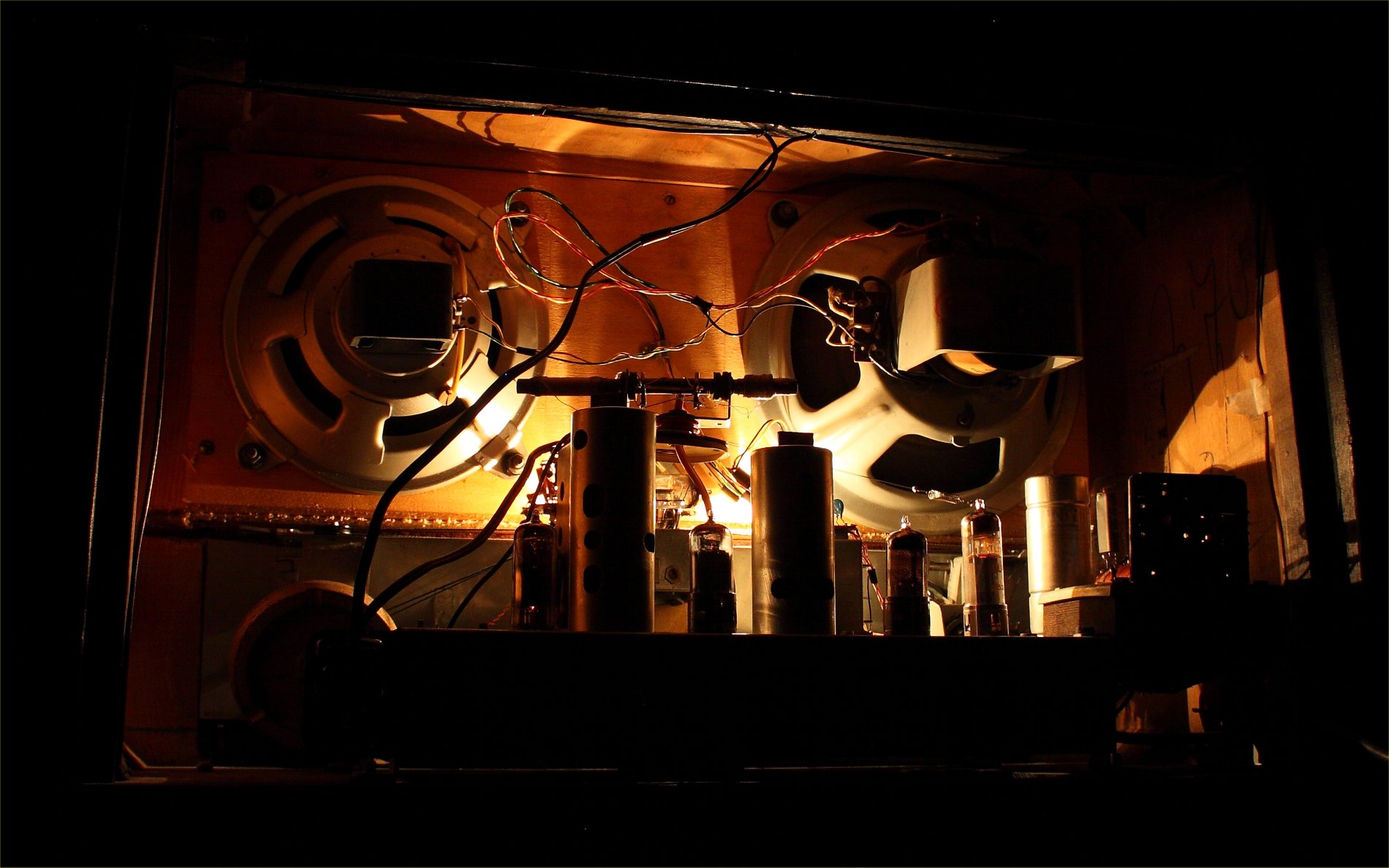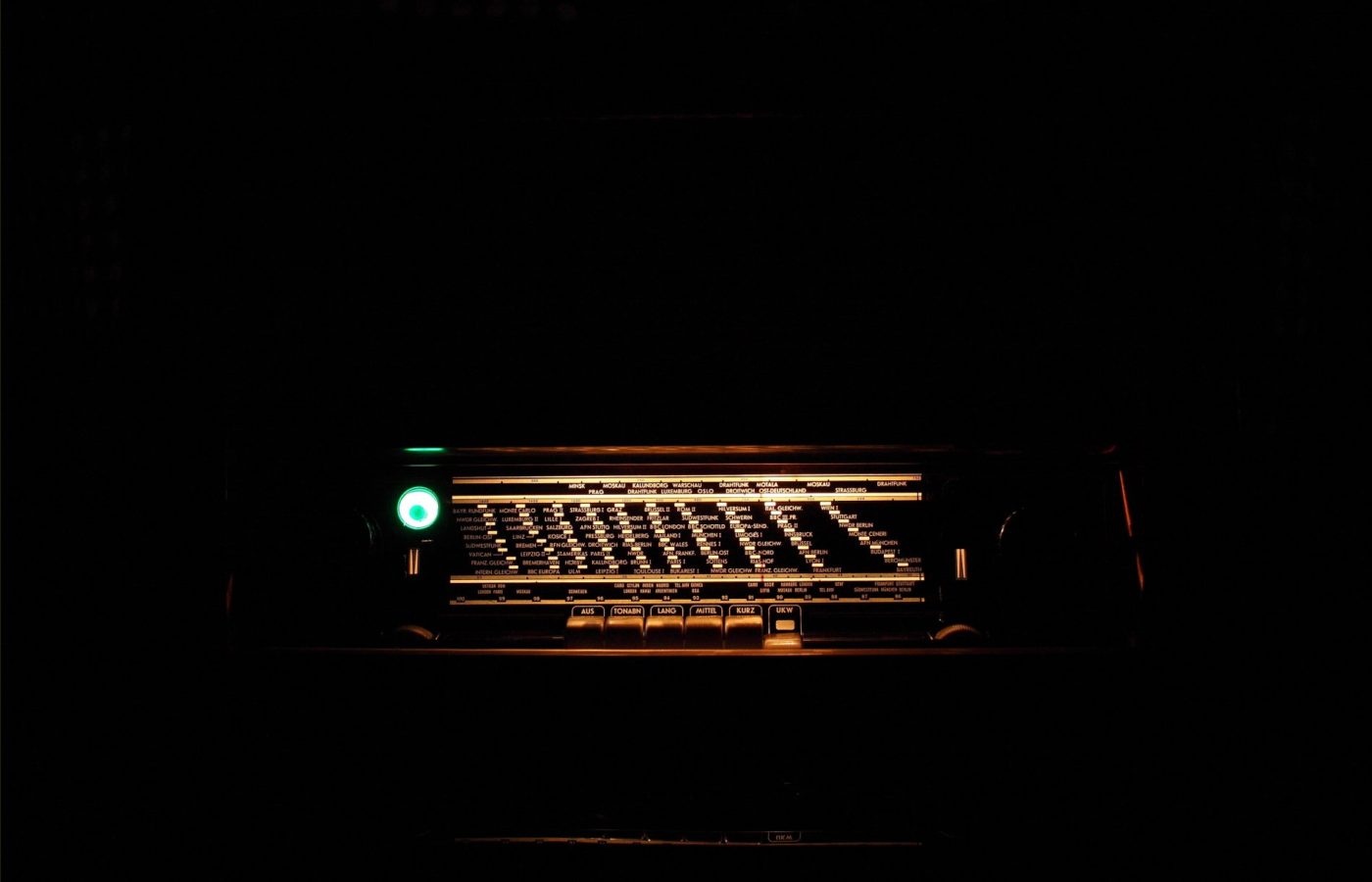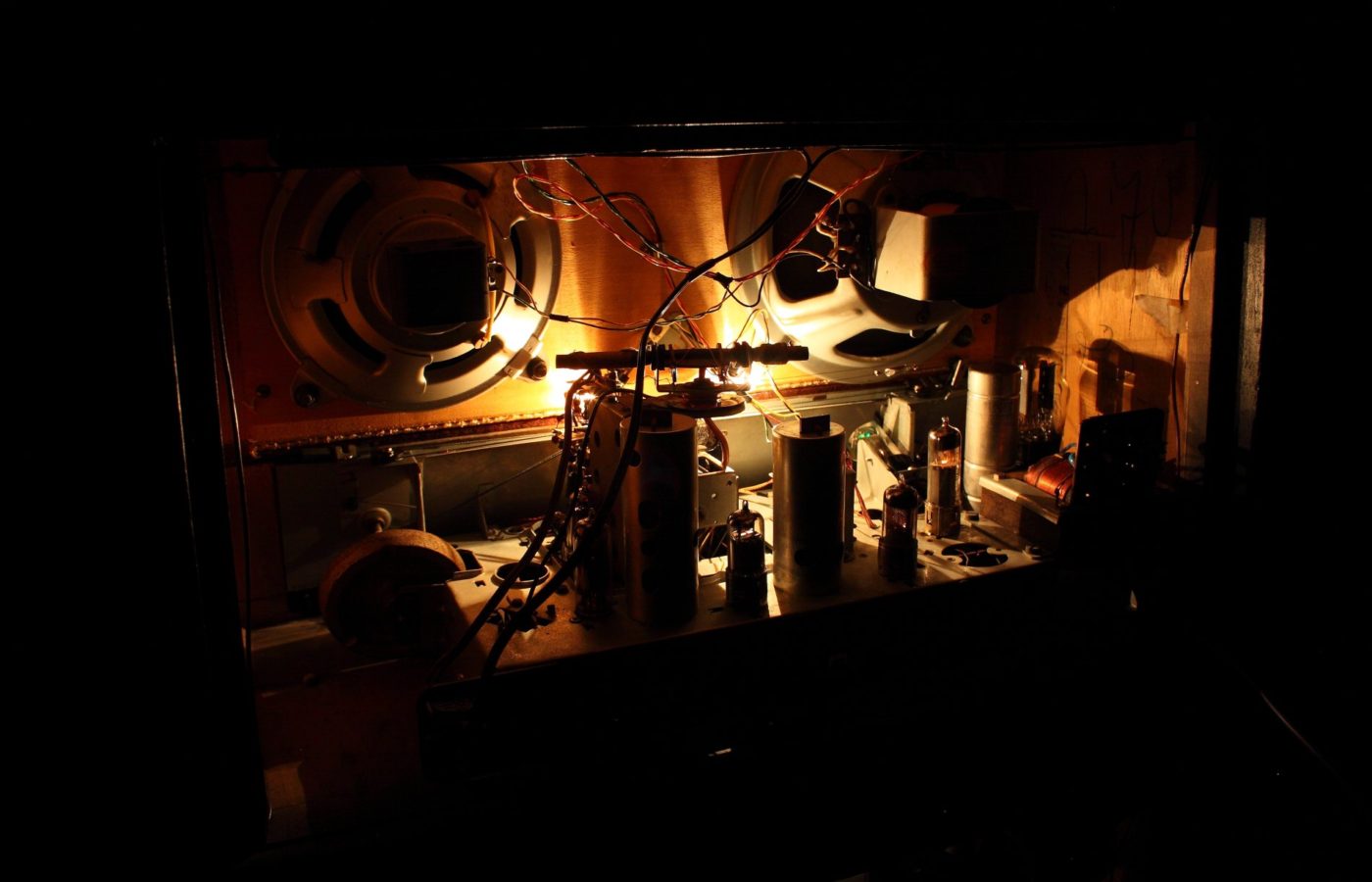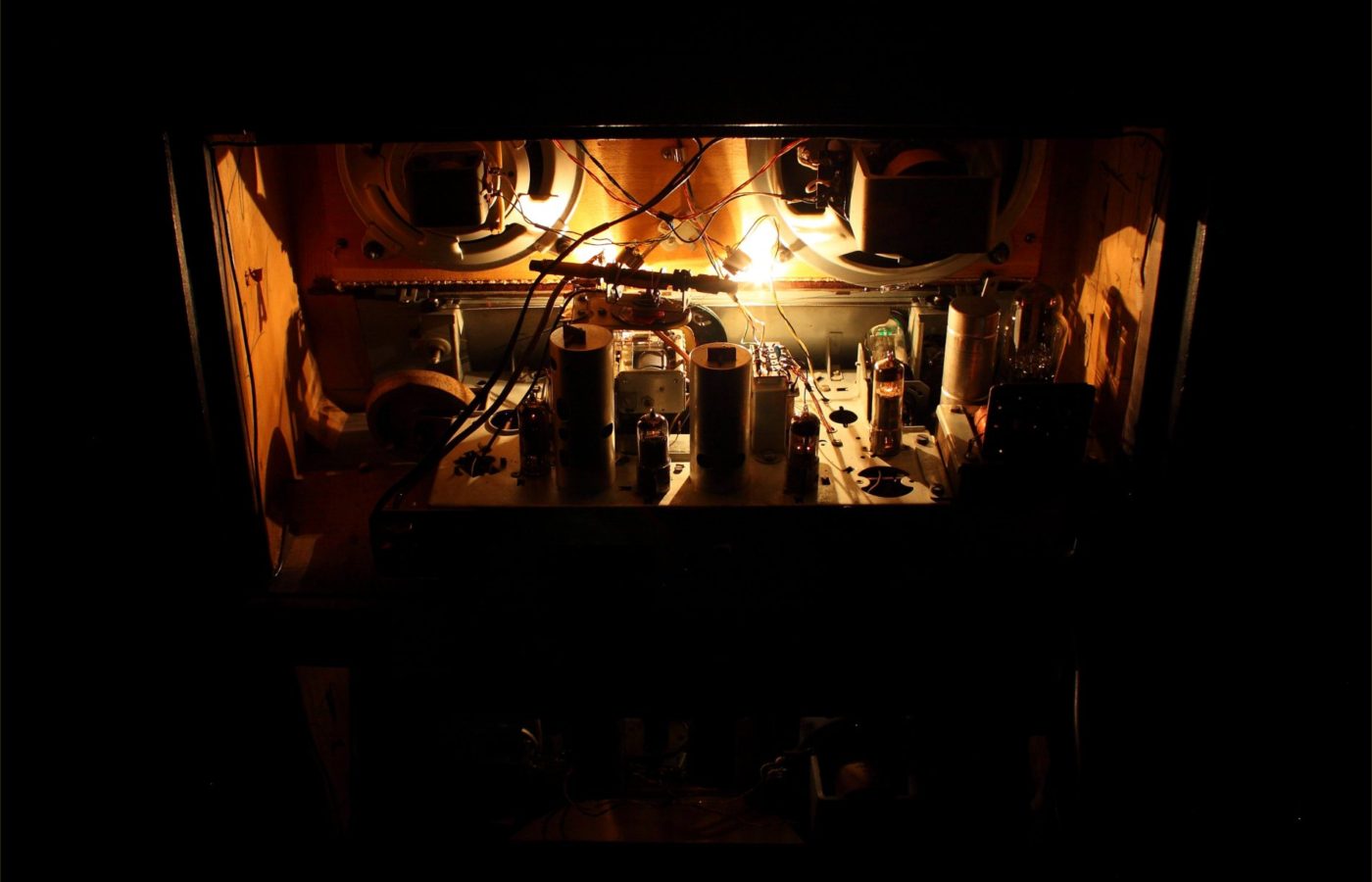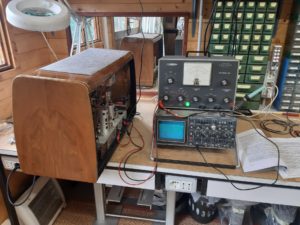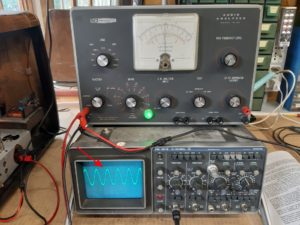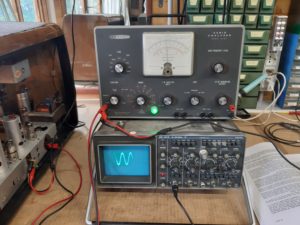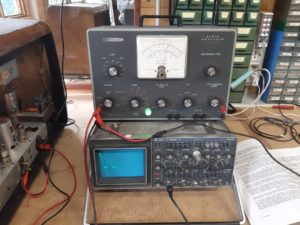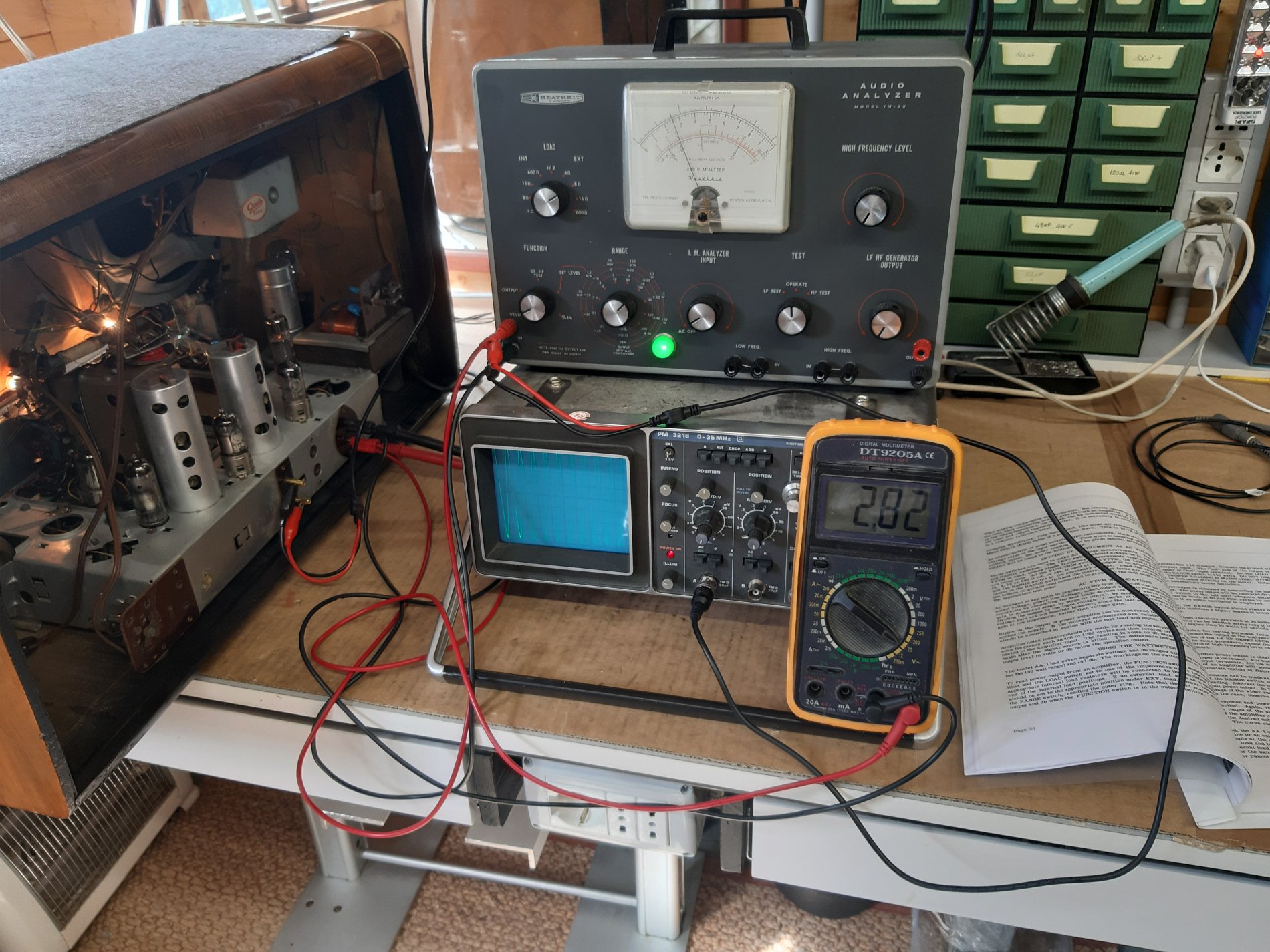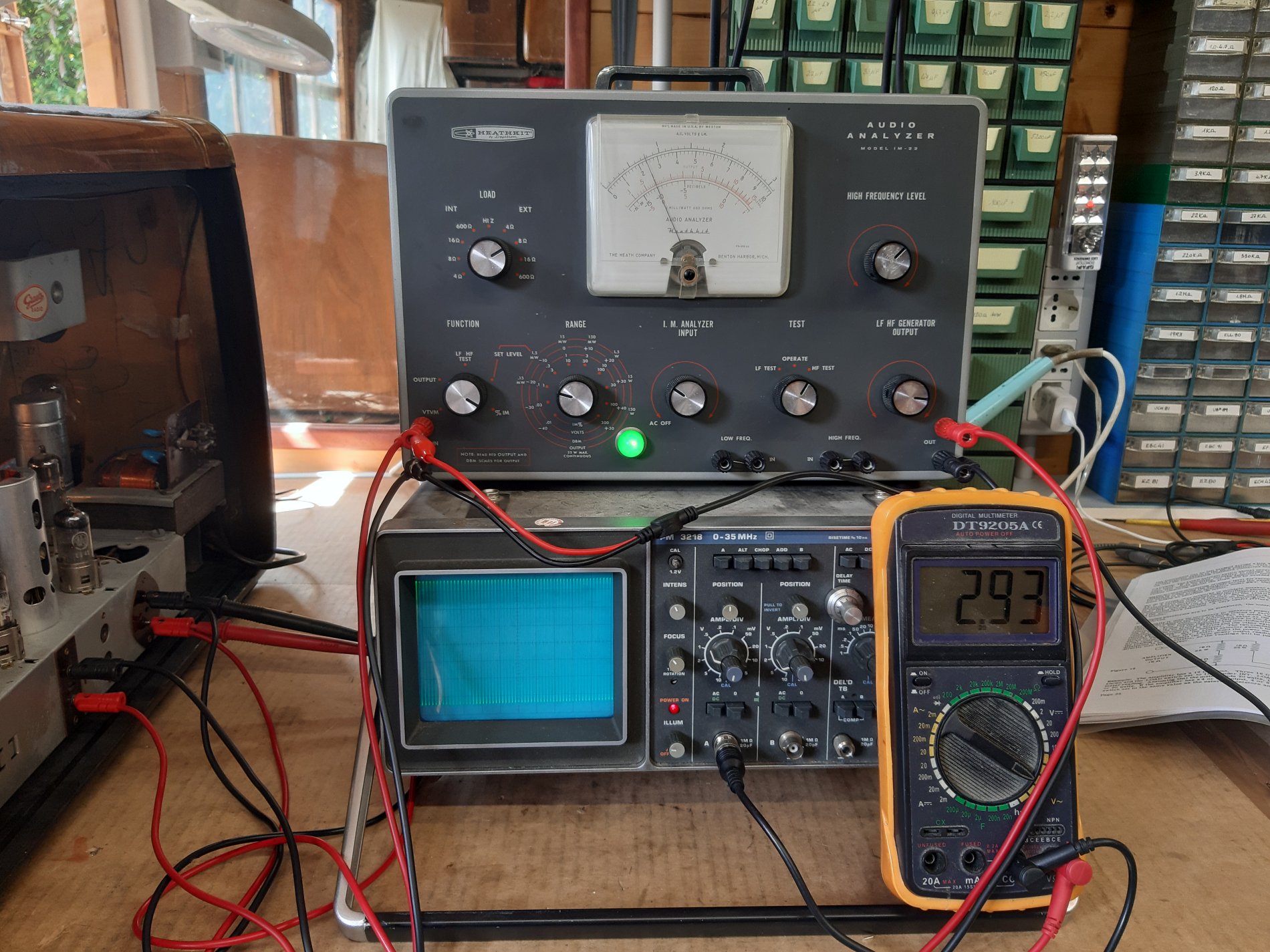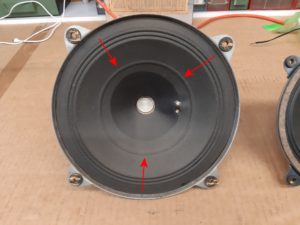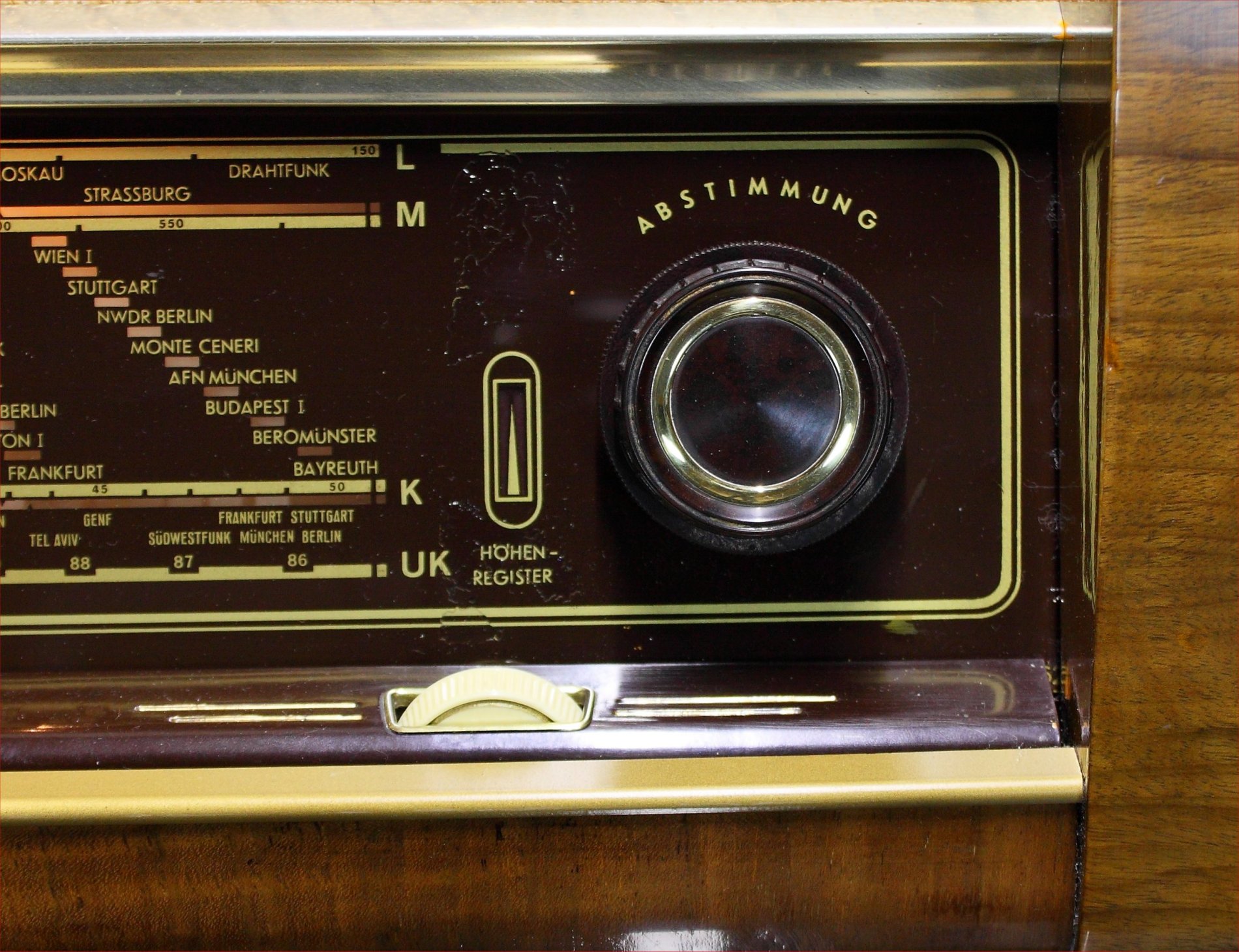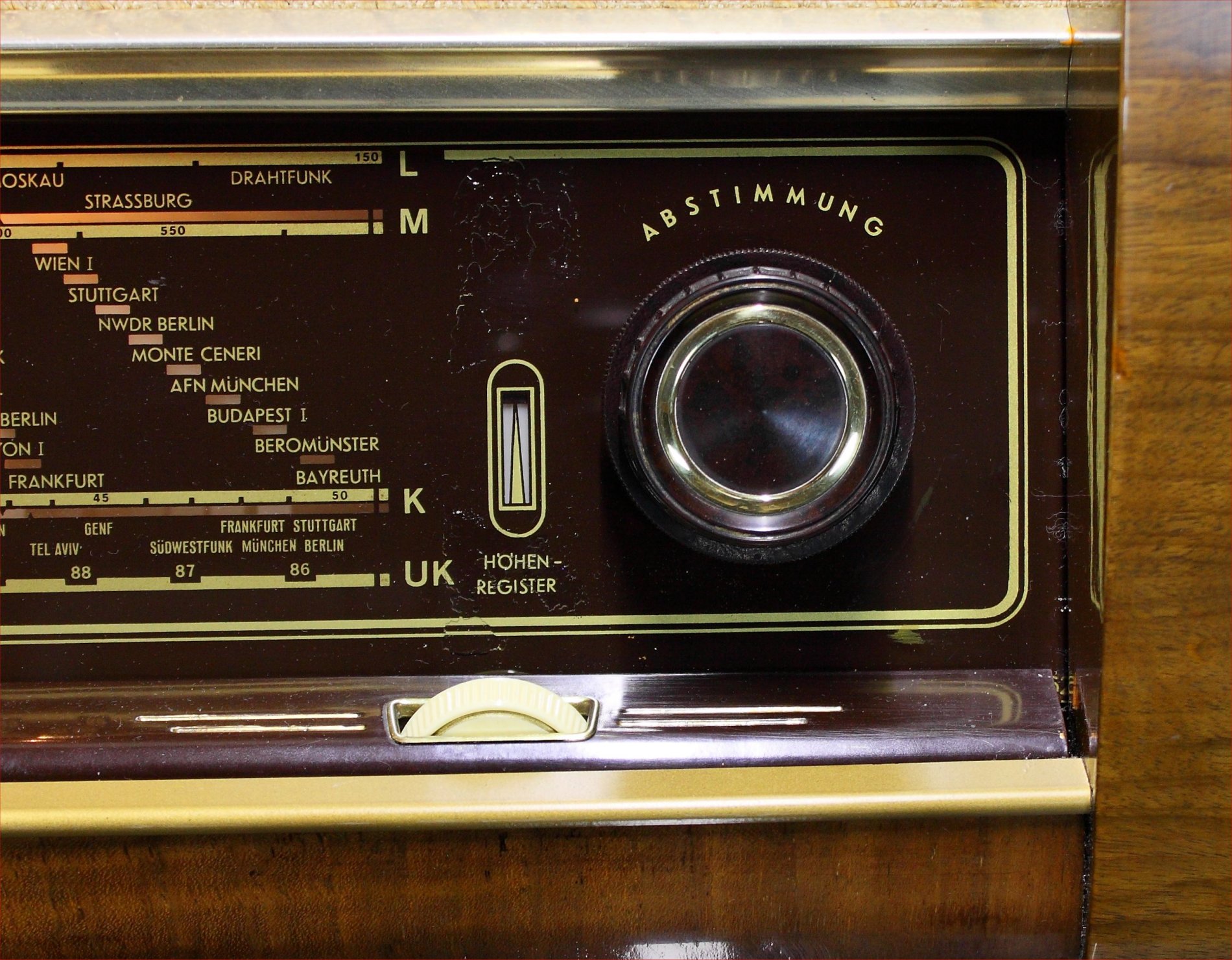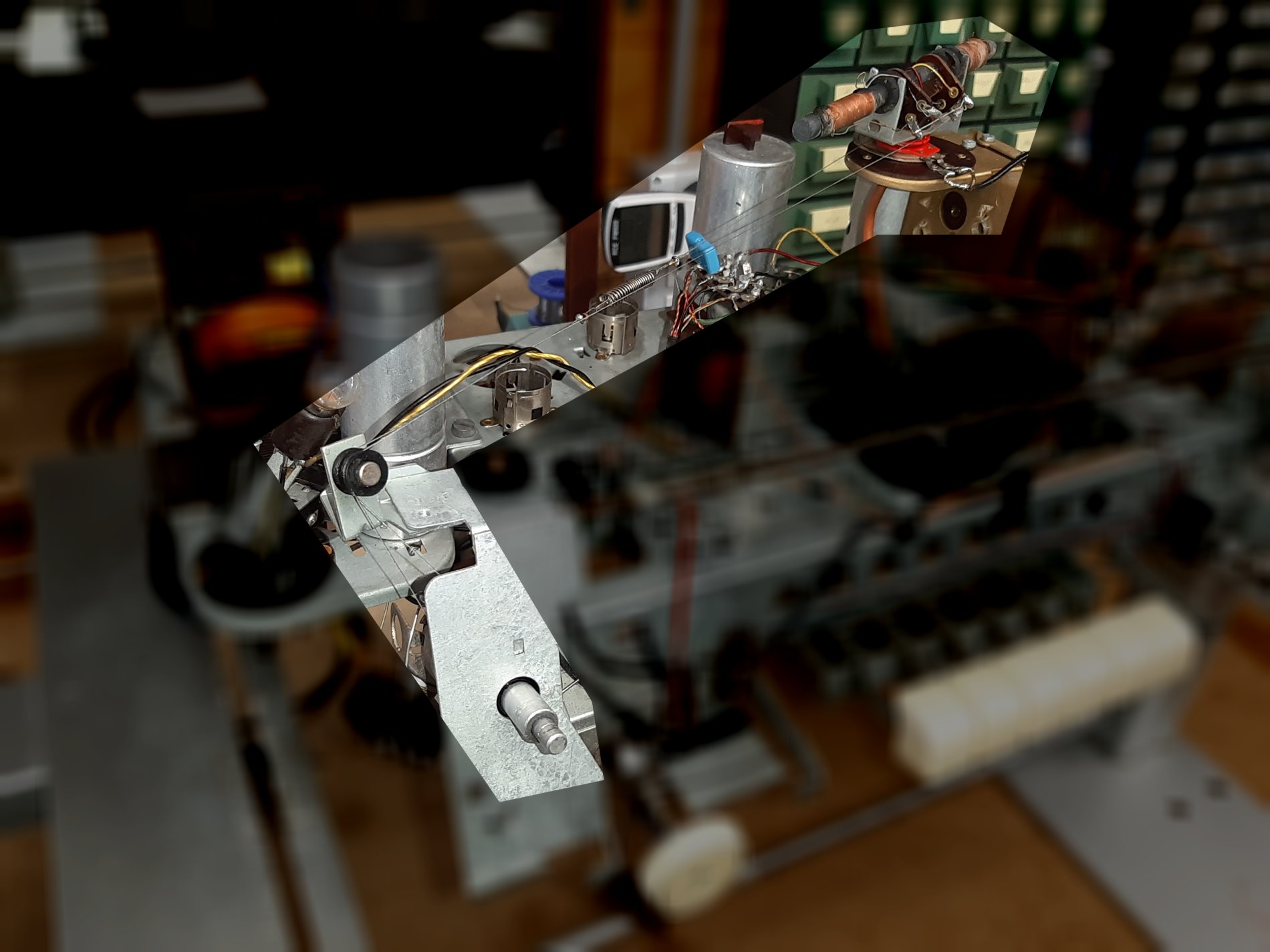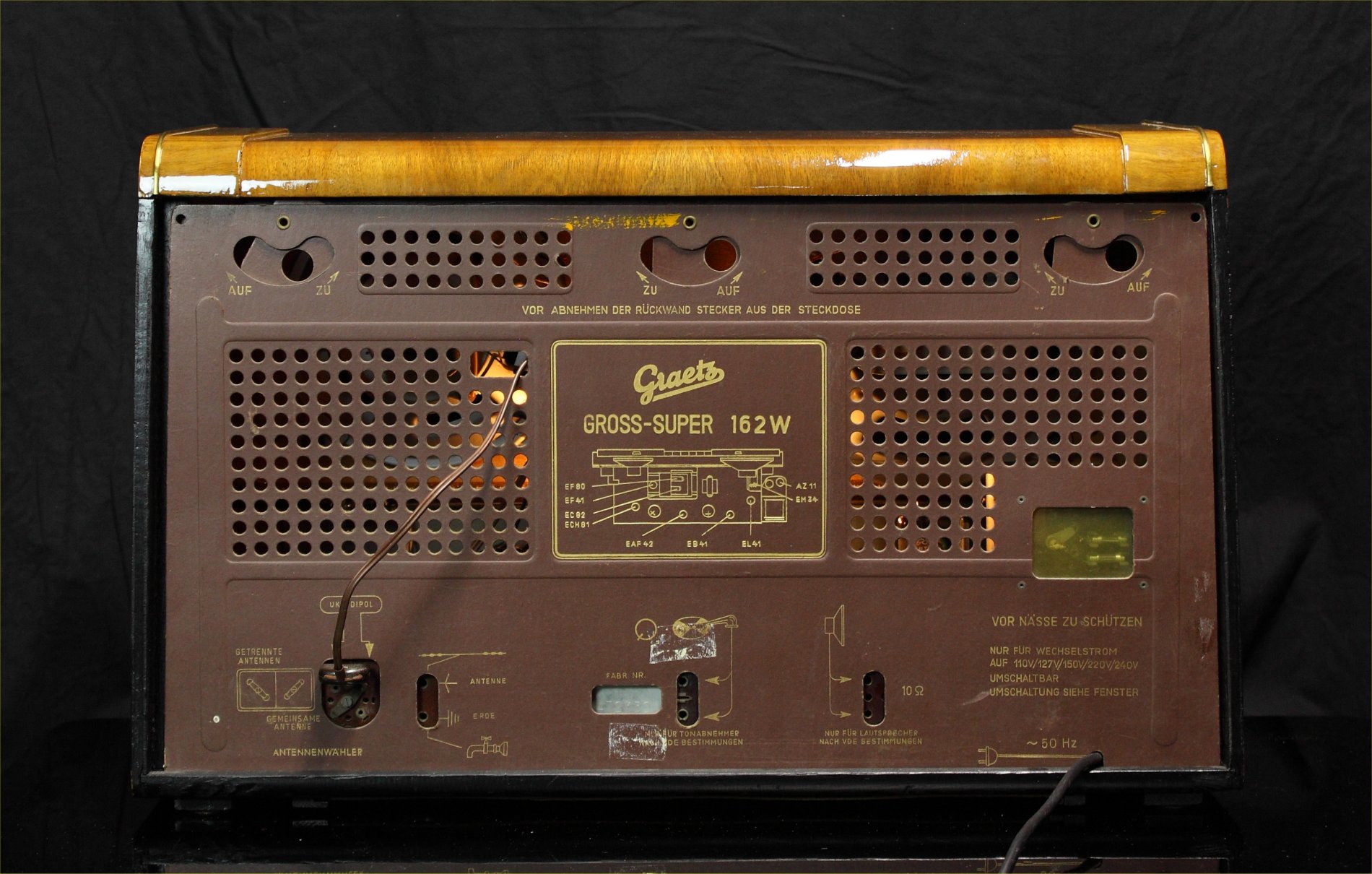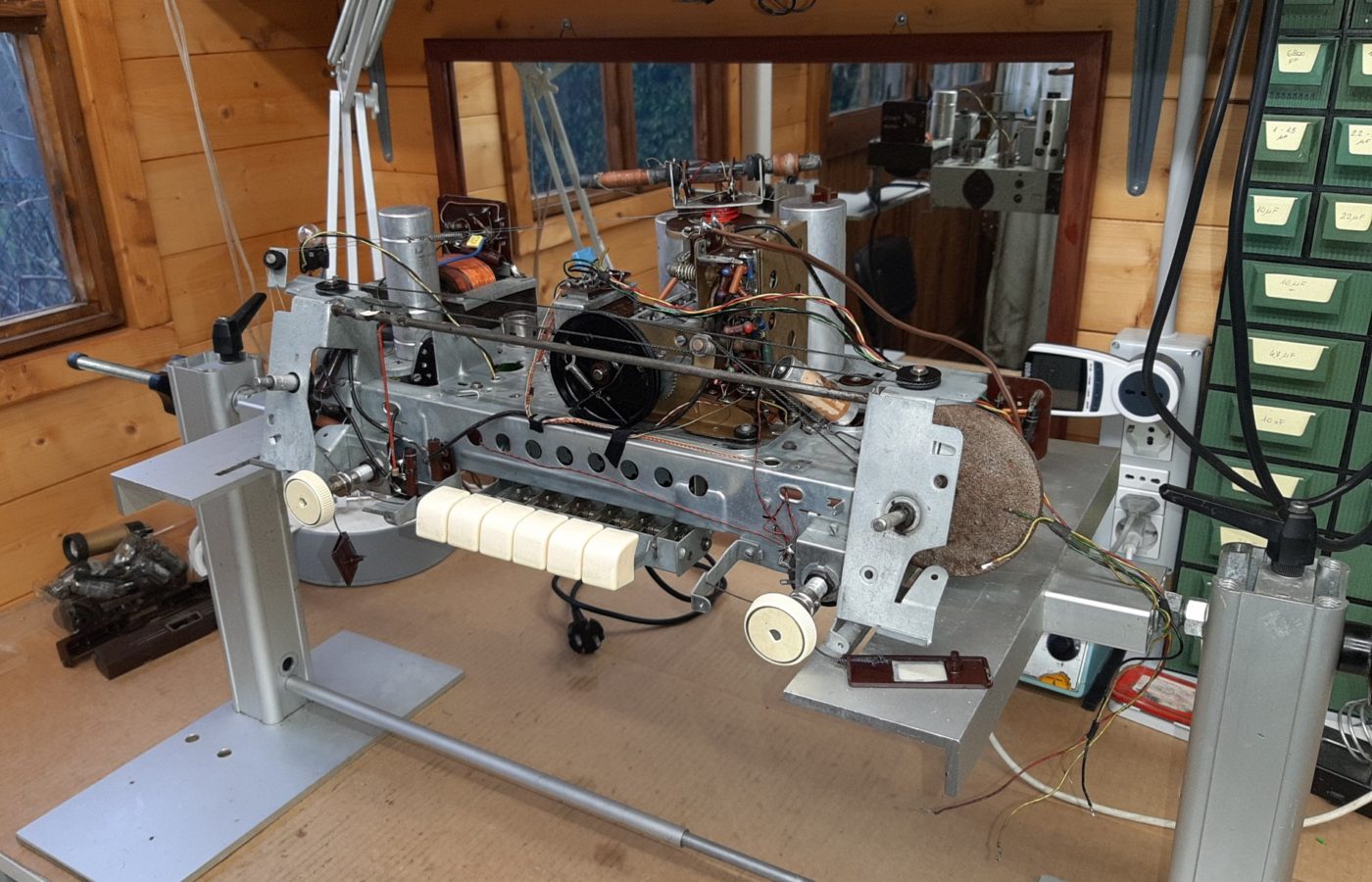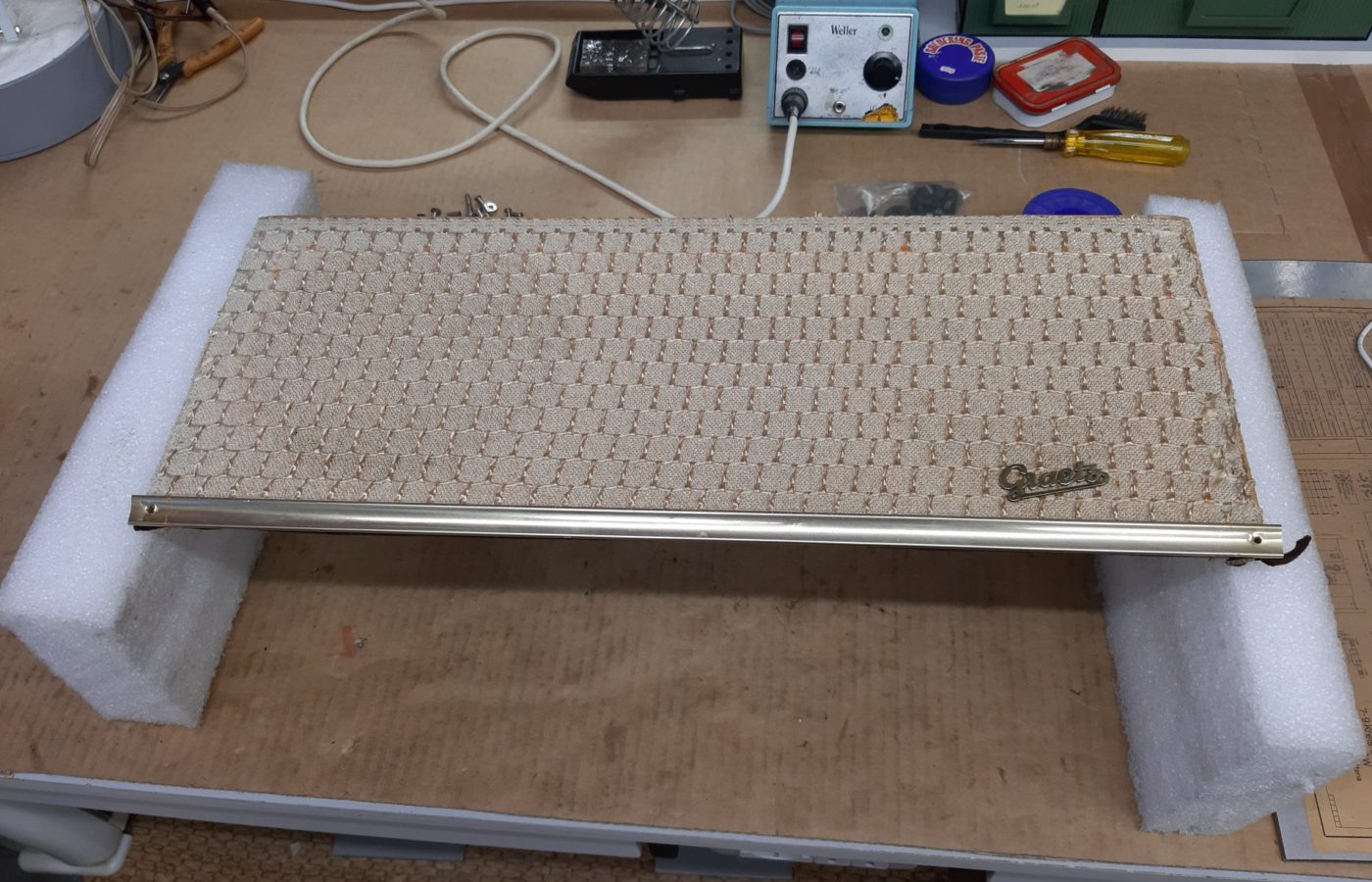 162w - cn
162w - cn
Graetz 16…
- by giovanni
GRAETZ 162W
GRAETZ 162W
The review of the Graetz 162W is different from all the reviews ever published.
Starting from this one, the reviews will be accompanied by a section with graphs of technical measures of the most important parameters.
There is no such thing anywhere else, as far as I know. Not even the manufacturers themselves detailed the technical features of their own devices at this level.
This new section has been developed for an objective comparison of different devices.
In order to avoid interpreting the measurements incorrectly, it is very important to read the warnings carefully the first time.
When it was decided to restore and test the Graetz 162W, expectations were quite high. Actually, the 162W differs from the 163W, top model of the Graetz production in 1952, only for the output tube, one of the two speakers and some other minor details. Moreover, both of these devices have very interesting circuit choices which provide them with a very peculiar sound.
First of all, they are both equipped with an electromagnetic coil loudspeaker and a permanent magnet loudspeaker. The permanent magnet loudspeaker, with a smaller diameter, has a greater extension towards medium and high frequencies. The electromagnetic coil loudspeaker has a considerable extension towards the medium-low frequencies. The two speakers are connected in series, there is no a crossover network between the two, the separation of frequencies is entrusted to the mechanical characteristics of the speakers themselves. Both of them will be examined in detail in the specific section.
The FM section is also very peculiar. The HF section is entrusted to an EF80 Variable transconductance . The same tube is used simultaneously as a audio preamplifier. In the diagram here, the HF circuit is highlighted in blue and the audio stage one, instead, is highlighted in red.
The Audio Section is entrusted to a EL41 pentode EL41 working in A Class.
The Volume potentiometer is equipped with a loudness pinout. It is known, in fact, that when listening at very low volume, the low and acute notes are not perceived with the same sound intensity as the medium notes, which clearly prevail.
The loudnes circuit changes the curve response of the preamp section specularly to the Fletcher–Munson curve. This allows to keep the perception of the extreme sounds of the audible audio spectrum constant even at low volume levels. The Tone Control, separate bass and treble, is inserted in the feedback network.
Conclusions: a warm and mellow sound was what one would expect from the Graetz 162W, and this is even its most evident feature. The absence of a real tweeter makes it necessary to emphasize the treble to get a balanced response. The treble control effectively solves the problem. The efficiency of the two loudspeakers and the very contained distortion give this radio a powerful voice, despite the limited power available. The tuning is very stable. The interfacing with external sources, CD players, bluetooth etc. is free of any problem. Its graceful shape, the choice and the processing of the wood and its musicality make it a very enjoyable and reliable device.
The recordings made with the Graetz 162W are all dedicated to the dawn of Jazz. Listening to such songs with this device was particularly exciting, given the dominance of medium tones and voices. The old recordings have shown an unusual charm and it is worth listening to them.
The first song is one of the first and most peculiar Negro-American ballads, Frankie and Albert in the famous interpretation of Huddie Ledbetter.
Leadbelly, stage name of Ledbetter, that derives from a bullet never extracted from his belly, had a very busy life. From 1910 to 1930 he was arrested several times, in Texas and Louisiana, for fighting, attempted murder, for getting some girls pregnant.
In the last years of his turbulent life finally came a good success in the music field, which even got him to a tour in Europe.
http://www.leadbelly.org/
The ballad talks about Frankie, a good and devoted woman, and about her lover, Albert, a deadbeat and violent, who betrays her. The long ballad talks about Frankie's revenge who kills him by shooting him and who, after asking for Albert's mother's forgiveness, is sentenced to the the electric chair.
The story refers to a real fact that happened in 1899 in Missouri between Frankie Baker (22 years old) and Allen (Albert) Britt (17 years old).
The second song is a Pianola Roll recording of the very well-known Maple leaf Rag, played by Scott Joplin.
This recording on Roll for piano, thought to be lost, was found on Ebay mounted on a wrong player. The perforated roll has been restored and recording is freely available on Youtube.
The American Civil War has been over for three years, misery, hunger, rebellions, they are tough years in the States. There is a need for cheerful music to lift the spirits and Ragtime comes at the right time. Born as art music, difficult to perform, it finds in Joplin its greatest exponent. Born in Texas, he started playing in the infamous clubs of Missouri and then moved to New York.
The Ragtime develops in four themes of sixteen themes according to the AABBACCDDL scheme. The beauty of the songs here proposed lies in the syncopated rhythm played with the right hand accompanied by the 2/4 not syncopated time played by the left hand. For M.Stearns, in “The story of Jazz” the left hand is inspired by the rhythm of the European school march, the right by the way of playing the Banjo proper to the black musicians of the South.
A white New Orleans musician who deserves to be remembered is Paul Mares.
The third and fourth tracks proposed are his famous foxtrot “She's Cryin' For Me” in Mares' original version and in the Au Brothers Jazz Band's interpretation.
Paul Mares moved to Chicago in 1919, created the famous New Orleans Rhythm Kings. The orchestra was mainly formed by white immigrants from New Orleans, they played at Friar's Inn, in the heart of white Chicago, a place frequented by gangsters such as Al Capone. Mares is to be credited for bringing New Orleans' musical soul to Chicago.
The Au brothers owe their musical talent to their uncle, a High Sierra trombonist, Howard Miyata. The quality of the execution and the arrangements restore the freshness and panache that characterized this last century music at its beginnings. The proposed recording has both the strengths and weaknesses of live recordings.

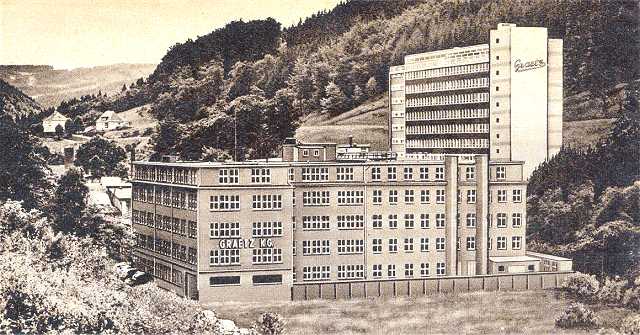
历史
Ehrich & Graetz金属制品厂由Albert Graetz(1831–1901)和商人Emil Ehrich(死于1887)以“Lampen-Fabrik Ehrich & Graetz OHG” (E&G). 为公司名称成立于1866年柏林。
到1897时,公司由Albert的儿子Max Graetz和Adolf Graetz控制。公司发展迅速,1899分别在柏林、美国、法国、英国和孟买建立工厂。
在1910-1916 年Max Graetz成立了著名的Petromax Lantern公司。1925年工厂也以Graetzor公司名稱開始生产收音机和其他电器。
就像第一次世界大战一样,在第二次世界大战中该公司成為战争工业的一部分。随着来自法国、俄罗斯和中国的强迫劳工的使用,该公司在生产上取得了巨大的收益。
1945年四月底这家工厂被俄国军队占领了。
1949年公司成为“人民”计划的一部分,自1950年成為“VEB VolksEigenerBetrieb” “VEB Fernmeldewerk, Berlin Treptow (RFFT).” VolksEigenerBetrieb,,意味着工厂的人拥有者是人民(共产主义)。
1948年Erich和Fritz Graetz在德国Altena成立了一家新的公司名稱為Graetz公司,这是Graetzor在柏林遭沒收的家族公司的继任者。这家新公司主要生产收音机和电视机1961年公司再卖给Standard Elektrik Lorenz (SEL) AG,但自1987年以来一直到现在由芬兰Nokia公司拥有。
主要特点
生产年份:1952
超外差式收音机IF 472/10700
7 AM电路,9 FM电路.
无线电波段: LW, MW, SW, FM
1X永磁扬声器
1X电动扬声器
尺寸(长高深): 62x38x30公分
净重: 15.5公斤
9支放大管: EF80 EC92 ECH81 EF41 EM34 EAF42 EB41 EL41 AZ11

MEASURED TECHNICAL FEATURES
IMPORTANT REMARK
(to be read carefully at least the first time)
- The following measures have been carried out in order to compare, from an electrical point of view, the devices that will be reviewed on this site. It is not possible to make comparisons with measurements made by other laboratories on different devices. The instrumentation and measurement conditions are probably very different.
- The instrumentation used for the measurements is obsolete and unprofessional. We believe that more precise instrumentation is not necessary due to the tolerances of the human auditory system. Distinguishing a distortion of 1% from one of 1.1% or 1.001% only makes sense from the electrical point of view. Probably no one can hear the difference by ear. Only a child and very few lucky people can perceive the difference between a flat response curve up to 16 KHz and one up to 20 kHz.
- The perception of sound depends on many factors, namely the age of the listener, the listening environment, the musical genre that is being reproduced, the listener's expectations, his or her listening habits and knowledge and many other factors, besides of course the quality of the other devices. Therefore, there is no direct and unique relationship between the results of the measurements made and the pleasantness of listening to a specific device.
BANDWIDTH
The frequency response curve was detected on resistive load by measuring the RMS voltage at different frequencies and converting the results into DB.
The BLUE line indicates the bandwidth with the tone potentiometer in a flat position.
The RED line indicates the bandwidth with the tone potentiometer in the position of maximum exaltation.
The bandwidth was measured on resistive load. Therefore, it does not take into account the deformations deriving from the inductive load of the loudspeakers and their mechanical response.
RMS POWER
We consider as Maximum Power the square of the lower of the RMS voltages measured at the three sample frequencies divided by the load resistence.
The measurement conditions are the following:
- sample frequencies, 100, 1000, 10,000 Hz
- 8 ohm resistive load
- distortion less than or equal to 1%.
The measuring instrument provides the RMS value directly.
The measured RMS power is 3.4 W
INTERMODULATION DISTORTION %
The Intermodulation Distortion % was measured with the SMPTE standard and measured at 1W RMS.
The two measurements were carried out by modulating the 50 Hz sine wave with a 1080 Hz sine wave and then with a 10400 Hz sine wave, with an amplitude in a ratio of 1/4 compared to the basic sinusoid.
The output voltage was kept around 2.83V on an 8 ohm carico.
The measured Intermodulation Distortion % (IM%) is 0.8%
IM% at 1000 Hz
IM% at 10.000 Hz
扬声器
The speakers of this radio are one of the most interesting and peculiar characteristics of such device.
The larger of the two measures approximately 24 cm in diameter and is electrodynamic. Instead of having a Permanent Magnet, like all modern cone loudspeakers, the static part called field coil, inside which runs the moving coil that drives the cone, is made up of an electromagnet. A winding of very fine wire which, when traversed by electricity, becomes a magnet.
In this speaker, branded Graetz BV8191 model, the winding consists of 11,000 coils of 0.18 mm copper wire. The static resistance of the winding is 950 ohms.
Being the winding of the field coil connected between the two power supply filter capacitors it also works as an inductor of the LC filter, thereby significantly reducing the ripple at the output of the second filter capacitor.
Finally, it can be seen in the photos that this speaker has a concentric fold in the cone. This has two functions. The first one is to reinforce the cone, for which a thinner and lighter membrane can be used allowing a more prompt response and less inertia. The second is a mechanical insulation between the central part of the cone and the external part.
The central part of the cone is the one that reproduces the high tones, which in this way is more elastic than the entire cone, allowing an upward extension of the frequency response.
The second speaker is an Isophon P18 / 19/105 with permanent magnet, 18 cm in diameter, and a frequency response that extends from 90 to 10,000 Hz within 3 dB.
Connected in series to the bigger loudspeaker, it reinforces the whole band in general and, above all, it extends upwards the extension of the entire system.
It is a speaker with a fairly light cone, with an Alnico magnet and a magnetic flux density of 10,500 Gauss. The speaker is very dynamic and efficient. The complete features are indicated in the chart.
MAGIC EYE SAVING SWITCH
By pulling the knob, a switch is activated which halves the anode voltage of all the tubes. In this way there is a decrease in the brightness of the magic eye and a decrease in the wear of all the tubes. The power supplied is also decreased and this allows a better management of the volume control at low levels. In fact, with the same angular rotation that normally allows to go from the lowest to the highest level, with the anode volatge and therefore also the power halved, the potentiometer allows to go from zero to about half the volume, becoming easier to adjust. This function is especially useful for night listening.
音调控制
音调控制系统是非常有效的,在音调控制大旋钮上,你可以找到一个小窗口,黑白颜色对比逐渐显示出对高低音比例。
1 - Volume control (with loudness built-in) - Anodic high / low voltage switch
2 - Rotation command of the ferrite antenna
3 - The magic eye that indicates the perfect tuning of each station.
4 - Indicator of the bass control position
5 - The bass control knob
6 - Power Off button
7 - Auxiliary input (Turntable, CD, Bluetooth)
8 - Long Waves
9 - Medium waves
10 - Short waves
11 - FM
12 - Indicator of the position of the high tone control
13 - The treble control knob.
14 - The tuning knob, whose movement is very pleasant being supported by a large flywheel.
恢复步骤
呈现美丽的形象
